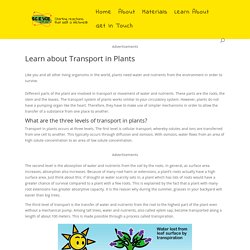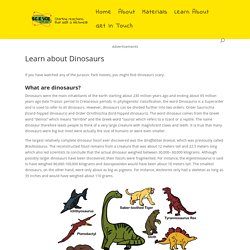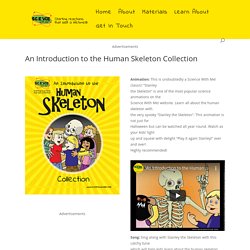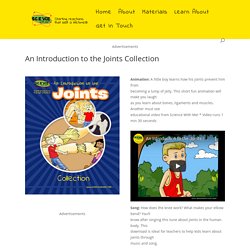

The Fun, Easy, Visual way for children to learn science! If you’ve been searching for a fun, easy, visual way to help kids learn science, you’ve come to the right place. Our products include cartoons, animations,stories and printable science worksheets that help children LEARN and LOVE science.
Science Experiments For Kids: Fire needs Air to Burn - Science for Kids. Learn about Transport in Plants - Science for Kids. Like you and all other living organisms in the world, plants need water and nutrients from the environment in order to survive.

Different parts of the plant are involved in transport or movement of water and nutrients. These parts are the roots, the stem and the leaves. The transport system of plants works similar to your circulatory system. However, plants do not have a pumping organ like the heart. Therefore, they have to make use of simpler mechanisms in order to allow the transfer of a substance from one place to another. What are the three levels of transport in plants? Transport in plants occurs at three levels. The second level is the absorption of water and nutrients from the soil by the roots. The third level of transport is the transfer of water and nutrients from the root to the highest part of the plant even without a mechanical pump. What is xylem? The xylem is a tube and transport system, that helps water and dissolved substances go to different plant parts. Science Experiments For Kids: Fire needs Air to Burn - Science for Kids. Learn about Blood - Science for Kids.
When you accidentally cut yourself while helping your mother peel potatoes or when you gain a bruise after playing football, you are actually witnessing blood at work.

Blood delivers the nutrients needed by the different parts of the body. When you have enough blood, you are able to think, play and study at optimum levels. What are the components of blood? The components of blood can be divided into plasma and cells. When blood is placed in a container and spun at high speeds in a process called centrifugation, the heavier and denser cells settle at the bottom while the lighter plasma remains on top. The cell component consists of white blood cells, red blood cells and platelets. White blood cells (WBCs). What are blood types? There are four main blood types: A, B, AB and O. What is anemia? Anemia is the term used for a deficiency of RBCs. What is leukemia? Leukemia is a condition wherein there is overproduction of abnormal white blood cells. Learn about Dinosaurs - Science for Kids. If you have watched any of the Jurassic Park movies, you might find dinosaurs scary.

What are dinosaurs? Dinosaurs were the main inhabitants of the earth starting about 230 million years ago and ending about 65 million years ago (late Triassic period to Cretaceous period). In phylogenetic classification, the word Dinosauria is a Superorder and is used to refer to all dinosaurs. However, dinosaurs can be divided further into two orders: Order Saurischia (lizard-hipped dinosaurs) and Order Ornithischia (bird-hipped dinosaurs). The word dinosaur comes from the Greek word “deinos” which means “terrible” and the Greek word “sauros’ which refers to a lizard or a reptile. The largest relatively complete dinosaur fossil ever discovered was the Giraffatitan brancai, which was previously called Brachiosaurus.
What was the behavior of dinosaurs? Most people believe that a dinosaur was cold-blooded, sluggish and unintelligent. Scientists believe that herding behavior was present among dinosaurs. Astronomy - Science for Kids. An Introduction to the Human Skeleton Collection - Science for Kids. Animation: This is undoubtedly a Science With Me!

Classic! “Stanleythe Skeleton” is one of the most popular science animations on theScience With Me! Website. Learn all about the human skeleton withthe very spooky “Stanley the Skeleton”. This animation is not just forHalloween but can be watched all year round. An Introduction to the Joints Collection - Science for Kids. Animation: A little boy learns how his joints prevent him frombecoming a lump of jelly.

This short fun animation will make you laughas you learn about bones, ligaments and muscles. Another must seeeducational video from Science With Me! * Video runs 1 min 30 seconds Song: How does the knee work? What makes your elbow bend? Get it HERE. An Introduction to the 5 Senses Collection - Science for Kids. Animation: Interested in learning about the body’s senses?

Have your kids learn how we hear, see, smell, taste, and touch with this smashing educational science animation brought to you by Science With Me! This fun animation helps you learn and retain scientific information effortlessly. Soon you’ll be sounding like a scientific pro! Song: Sing the Science With Me! 5 senses song…This is one catchy song you’ll never forget! Get it HERE Coloring Book: Have fun while retaining the scientific ideas and concepts you have learned in our 5 senses animation with our 5 senses coloring book. Get it HERE. Science for Kids - Experiments, e-Books, Fun Games, Quiz, Activities, Learning, Technology.